
We use phrases like “partial shade”, “deciduous shade”, and “woodland conditions” quite frequently at the nursery. But not everyone is clear on what these terms mean, or how they relate to their own gardens.
When thinking about a shade or woodland garden, we are trying to select plants which thrive naturally in a wild setting under deciduous trees, wherever they may come from in the world.
If you think about how light filters through a deciduous canopy – right across the forest floor from winter into spring when the trees above are bare, and then in the places of lightest cover, and thus greatest light, through the summer – this is where woodland ground cover plants grow, and these are the conditions to look for at home. You might also call this “bright shade”, or areas which get limited direct sunlight but are not oppressively dark.
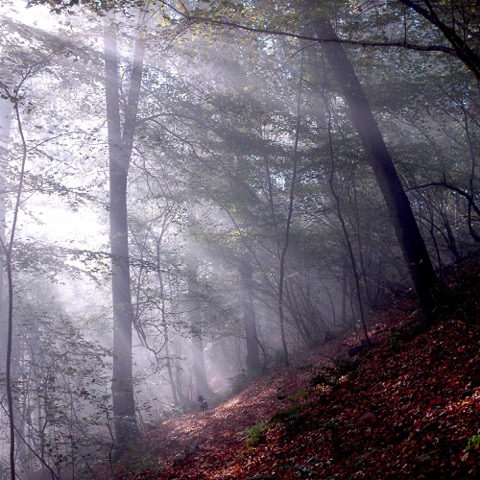
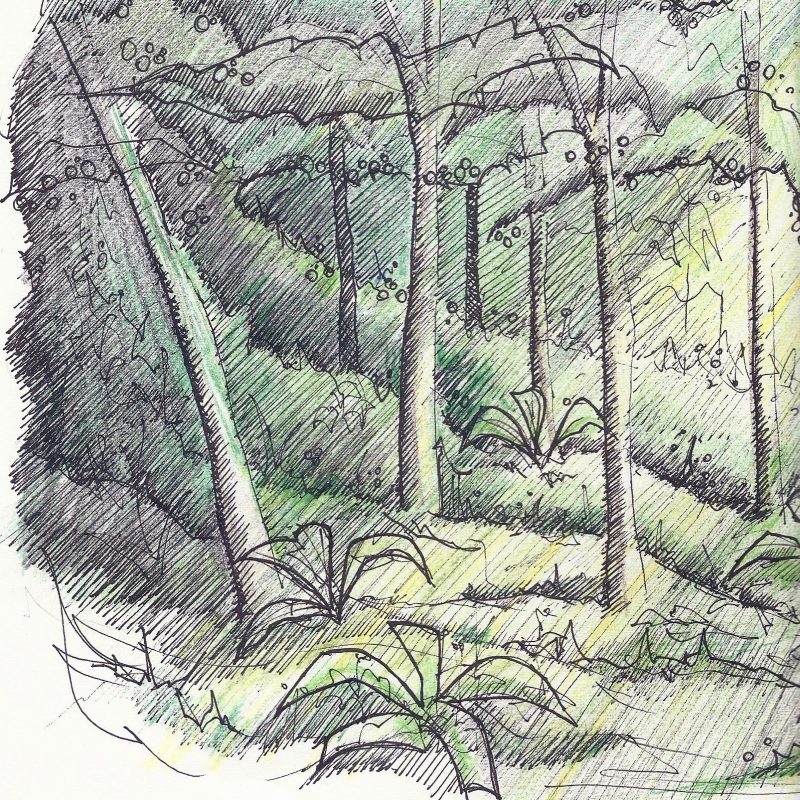

A common question we get asked about gardening under trees is, “how do I add colour?”. This usually implies, “not green”. But when gardening in shade, the first step is to learn to love green. As any Irish person knows, there is more than one shade of green, and, as anyone who loves a walk in the woods knows, a plurality of greens in no way makes for a bland or ugly view. Shade gardening is about texture, light, and subtlety. And it is the interplay of texture and light which will give your space dynamism rather than the bold colours of the summer border. In a shade garden you notice how the light through the trees is different at 2pm than it was at noon. Or in May than it was in March. However, this does not mean that you’ll never see a flower.
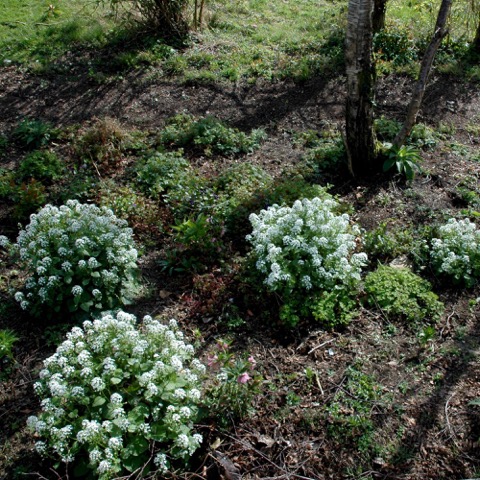
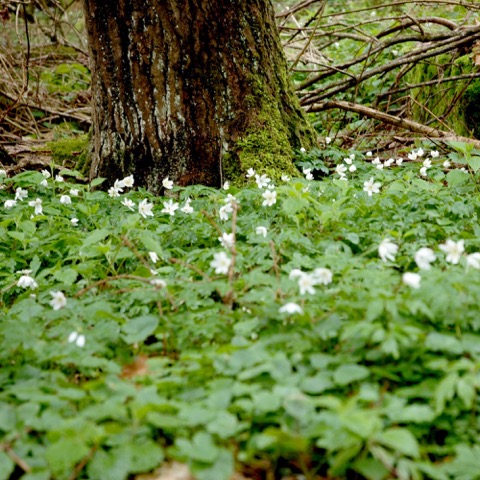
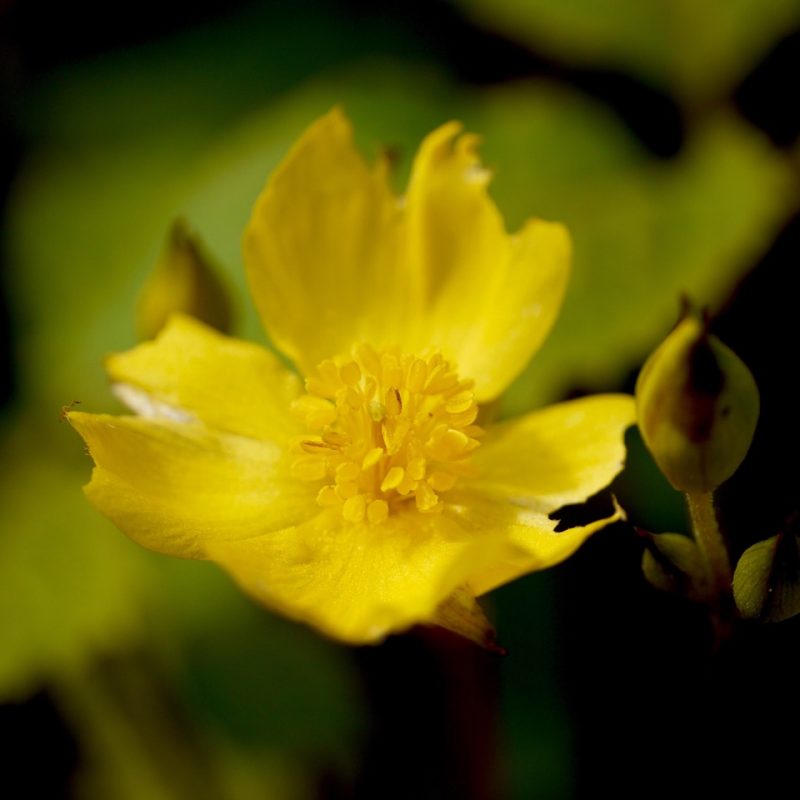
Pachyphragma macrophyllum, and tough evergreen perennial with clouds of white flowers from February to April thrives under deciduous trees, and is the beginning of a strong showing of spring flowering woodland plants capitalising on the increasing warmth of the new year before the leaves above shade them out. The spring Anemones like A. nemorosa, and A. blanda add shots of blue and white, and Anemone trifoliata has perfect white flowers above excellent foliage. Viola sororia ‘Albiflora’ is another very useful ground cover with delicate white flowers. Hylomecon japonica adds flowers in rich yellow which really catch the eye.
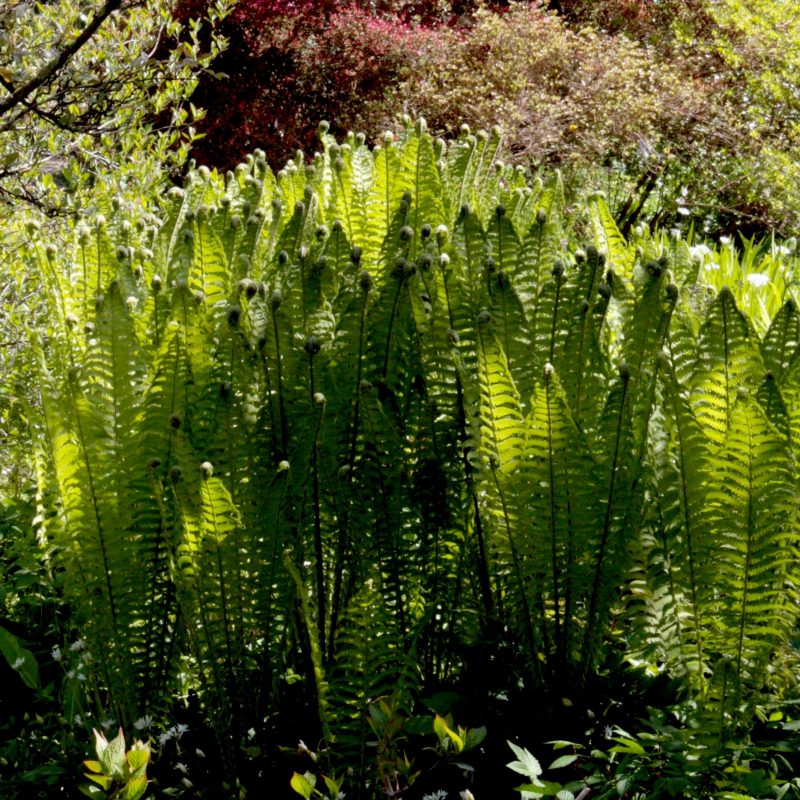
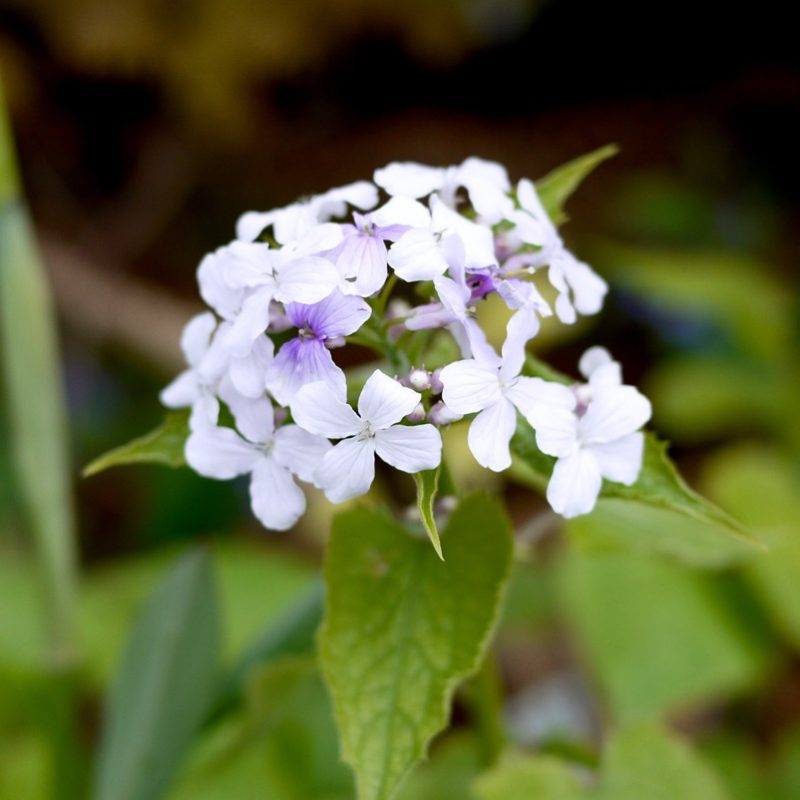
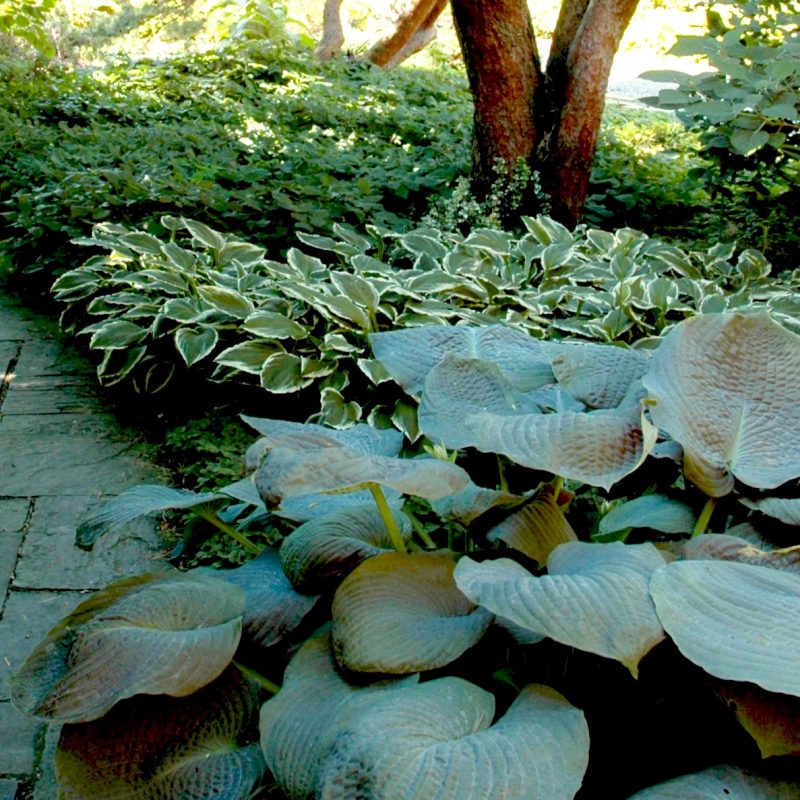
For more structural elements, the solomon’s seals are a fine addition, with plants like Maianthemum canadense, a spreading low-growing foliage plant with little tufts of white flowers, like a better behaved wild garlic, and Polygonatum × hybidum offering arching foliage and the most gracefully dangling bell flowers. Variegated and coloured foliage is another way to expand your palette of greens in the woodland. Hostas come in a wide variety of sizes and colours and do well wherever there is some soil moisture. Brunneras like ‘Jack Frost’ with blue flowers or ‘Mrs. Morse’ with white flowers have fabulous silver-mottled leaves to brighten up shady corners.
Ferns and shade-friendly grasses, such as Carex and Hakonechloa give you even more textures to choose from and are very effective in mass plantings interspersed with a handful of more substantial perennials like Hellebores or Lunaria rediviva – one of our favourite woodland plants. Lunaria features pale violet flowers followed in autumn by spectacular transparent seed pods, and is especially good as you move toward the edge of the canopy so the seed pods catch the angled light of late summer.
Here, at the canopy’s edge, you can also play with more colourful perennials. Dicentra (Lamprocapnos) spectabilis, the famous bleeding heart, comes in pink, white, or red. Foxgloves also thrive here, as does the startling black foliage of Actaea simplex where things aren’t too dry. Actaea is one of the few late flowering woodland plants and, along with late flowering Anemone hybrids such as popular A. ‘Wild Swan’, and the exotic looking toad lilies (Tricyrtis), give you flowers until the changing autumn colours of the trees above take over.
Planting under deciduous trees needn’t be a lost cause nor simply the exclusive reserve of spring bulbs. Follow the light. Choose tough plants who will find their own ideal growing conditions, and learn to find joy in texture as interest, not just colour. The woodland garden can be the most magical place of all.

